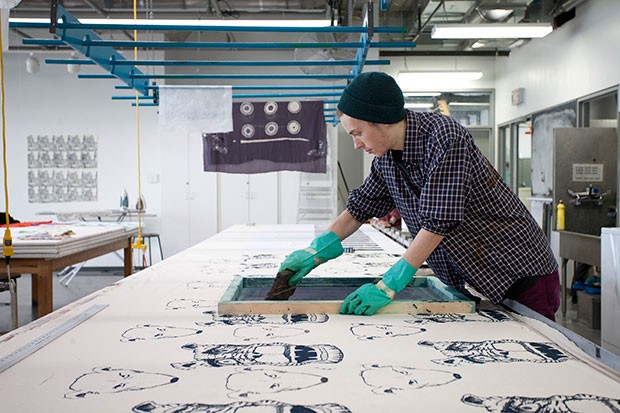Environmental, Health & Safety:
514-848-2424, ext. 4877
Fine Arts Safety

The Fine Arts Safety Program has been established to ensure academic, studio and work activities can be performed in a safe environment while ensuring compliance with all applicable safety, health and environmental laws and regulations. Environmental Health & Safety work in partnership with faculty, staff and students to ensure the safe and environmentally secure management of chemical materials. In collaboration with the various Fine Arts departments and the Fine Arts Health and Safety Committee there is a commitment to develop safe work practices as well as appropriate safety and environmental controls.
Fine Arts students, faculty, technicians and visitors working in the studios or workshops should be aware of the hazards associated with arts supplies and equipment used. Knowledge on the products used and how to interpret this information is necessary to protect yourself. There is also informatin on proper disposal of hazardous waste materials.
Even though work involving visual arts materials should cause no concern for health or safety, there are risks associated with some artist materials, such as pigments, paints, solvents and solid material such wood or stone. The guidelines describe possible risks associated with some of these materials and how such risks can be minimized.
Studio Arts Chemical Safety Guidelines
When working from home, it is important to remember that materials can pose health issues if not used correctly, such as sculpting materials (dusts from treated wood, stone, or plaster), fibers, and textiles. Even certain common household consumer products can be hazardous.







